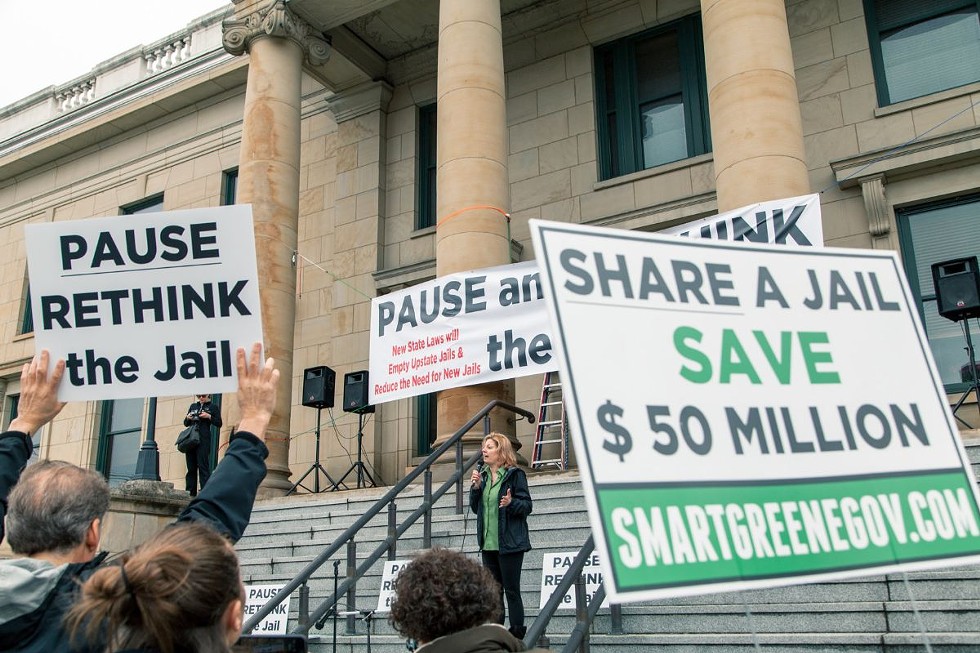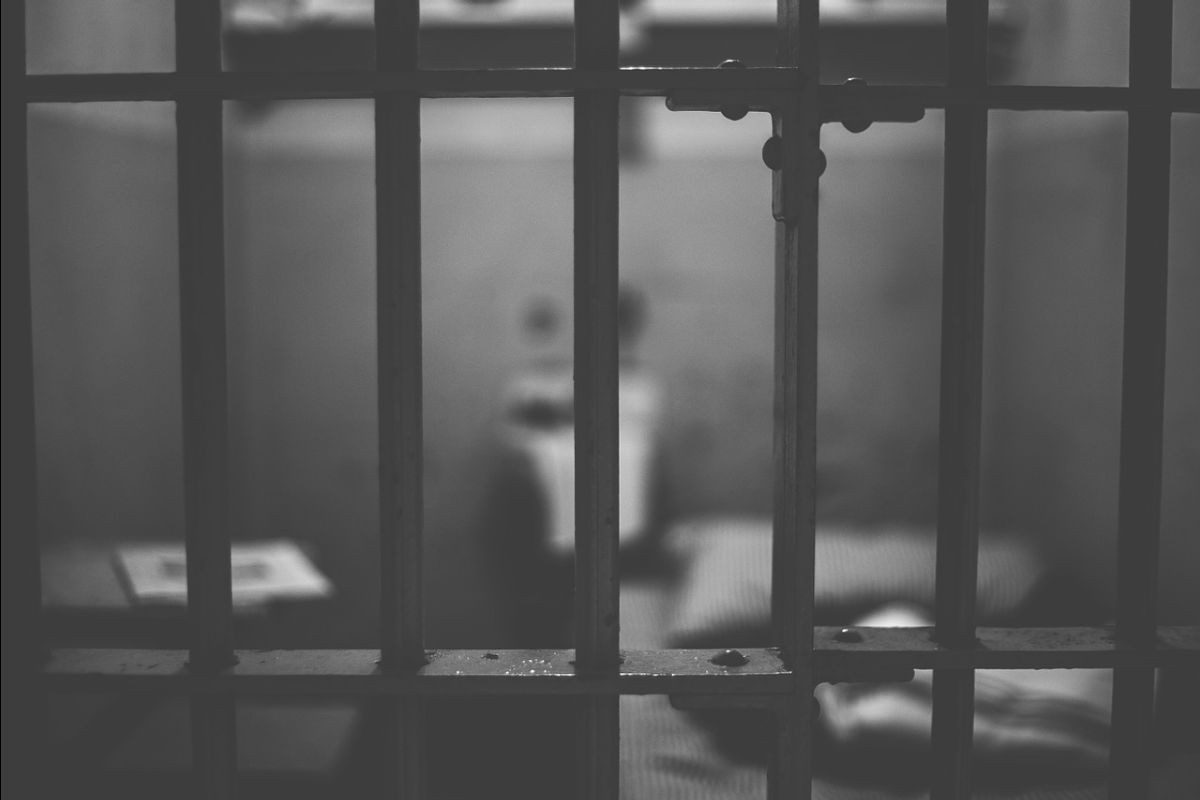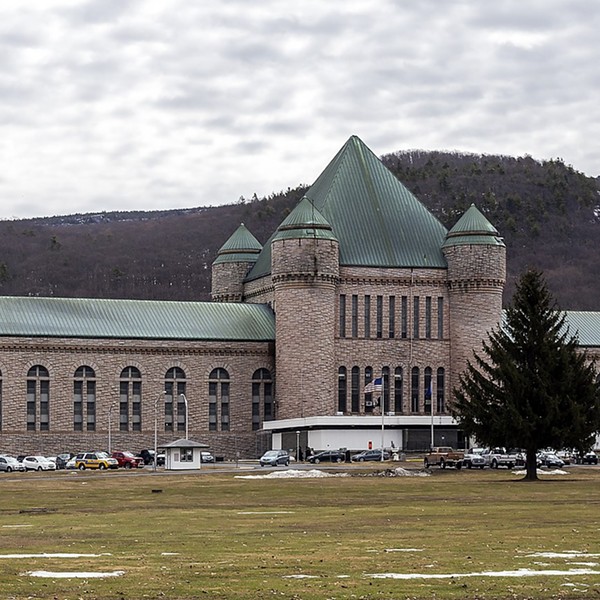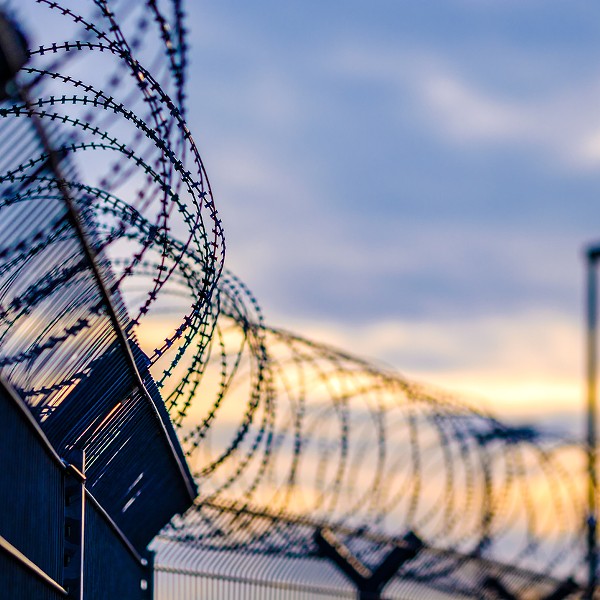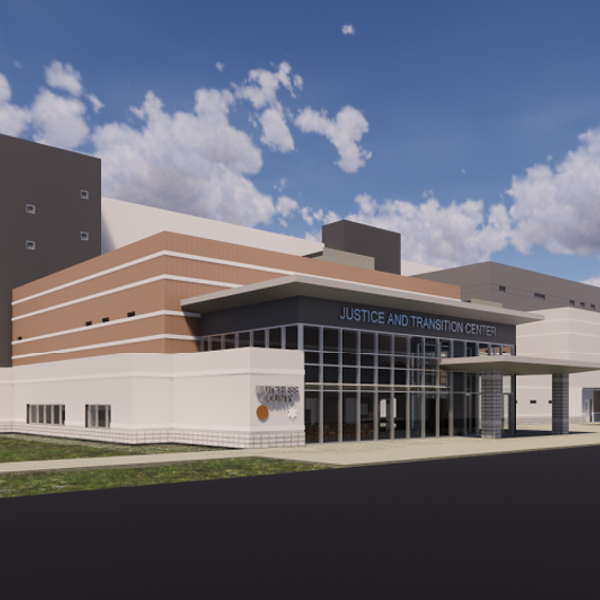What’s a crazier proposition: doing away with a county jail altogether, or spending $70 million on a jail that will probably hold no more than 15 people?
That’s what the citizens of Greene County are facing right now, as the county prepares to break ground on a new jail. The county’s old facility has deteriorated to the point of unusability, and Greene County inmates are currently being boarded in Albany and Columbia counties.
As the Greene County Jail construction project gets closer to a start date, critics are emerging to ask if the county really needs a jail at all. Here’s how former county legislator Lori Torgerson put it to a crowd of project opponents a couple of weeks ago:
“Shovels have not hit the ground yet, which means it is not a done deal,” she said. “We should not be building a new jail at this moment in time. It seems obvious. Don’t be that one county that puts the shovel in the ground three weeks after criminal justice reform. We should be working with other counties. We are all going to be in the same boat.”
What’s happening in Catskill is a microcosm of a drama that’s unfolding across New York State. The population currently incarcerated in county jails is slated to drop dramatically, due to a recently-passed bill eliminating bail for low-level offenses. That’s good news for low-income communities where people are often unable to come up with bail while awaiting trial. Syracuse.com reports:
“That’s a game changer,” said Emily Singletary, who runs the [Syracuse-based] criminal justice nonprofit Unchained. “That’s really huge in terms of keeping people out of our jails, allowing people to continue on with their lives, continuing working, supporting their families, not losing their apartments—all the things that happen when people spend even a night in jail.”
Bail reform is slated to make a major dent in New York State’s already-shrinking incarcerated population. About 65% of people imprisoned in New York State’s county jails are awaiting trial, and have not been convicted of a crime. Eliminating bail and pretrial detention for nonviolent felony and misdemeanor charges will reduce their numbers dramatically. And although the bill won’t go into effect until 2020, inmate populations have already fallen: Over the last two decades, the incarceration rate in New York has dropped by more than 35%.
“Inmate populations are falling. So why do we keep building new jails?” asks Chris Churchill, an editorial columnist for the Albany Times-Union. Churchill calls out the proposed Greene County Jail, along with facilities slated to be built in Schoharie and Herkimer counties, as multi-million-dollar mistakes, relics of a system that has proved costly to taxpayers and ineffective at deterring crime.
One reason: Shrinking inmate population or no, some of New York State’s jails are deteriorating badly. The Greene County Jail was one of five deemed the “worst in New York State” shortly before it closed its doors last year, according to the New York State Commission of Correction, which graded facilities on a list of factors including staffing, infrastructure, violent incidents, and suicides. Another Hudson Valley jail also made the dubious honor of inclusion on the list: the Dutchess County Jail in Poughkeepsie.
Another reason is more self-serving: Jobs. Gov. Andrew Cuomo, who has long been an advocate for shrinking New York’s penal system, is fond of saying that “prisons are not a jobs program.” But for many upstate towns, that’s exactly what they are, and local politicians in rural towns with prisons and jails often bitterly oppose their closure.
Five years after the state closed the Chateaugay Correctional Facility in Franklin County, North Country Public Radio paid the town a visit. Reporter Emily Russell found that the former prison has yet to find another use, and Main Street still hasn’t recovered from the loss of Chateaugay’s main employer.
State prisons in rural upstate areas have also historically given a less obvious boost to their surrounding regions: Political representation. Before the 2010 Census, New York State’s prisoners were counted as residents of the districts they were incarcerated in, not their former home addresses, artificially boosting the numbers of rural upstate Congressional and state legislative districts.
In an effort to combat “prison gerrymandering,” the state legislature passed a bill in 2010 mandating that prisoners should be counted at their former addresses. It’s unclear whether that legislation will apply to the 2020 Census, the Gotham Gazette reports:
The 2020 Census count will begin in April of next year, without full clarity on the prison count question. Prison populations can have significant impacts on how district lines are drawn, and those lines can greatly influence legislative balances of power.
The Times They Are A-Changin'
Bail reform is a major step toward decreasing the costs and community impacts of incarceration, but it's just one aspect of a larger effort underway to rethink what prison is for and how it should operate. Here are some other reform efforts underway by prison activists, in New York State and beyond:
Reform of solitary confinement. The New York State legislature recently passed a bill guaranteeing inmates in solitary confinement one phone call per week. Prisoner advocates want to go further: A proposed bill, if passed, would end the practice of keeping inmates in solitary confinement for months or years at a time. The HALT Act, which would prohibit the use of solitary confinement for more than 15 days in a row or 20 days out of a two-month period, may have enough Democratic support to pass later this year.
Restoration of voting rights. Apart from Maine and Vermont, every US state prohibits people convicted of a felony from voting for some period of time; in New York State, voting rights are restored upon completion of parole. Presidential candidate Bernie Sanders, I-VT, believes prisoners should have the right to vote, regardless of their crime or whether they are still in prison. Most of the other Democratic hopefuls in the 2020 presidential race have not gotten on board with full voting rights for prisoners, Vox reports.
An end to incarceration altogether. The New York Times Magazine recently profiled longtime prison abolitionist Ruth Wilson Gilmore. It’s not enough to close prisons, Gilmore believes:
Prison abolition, as a movement, sounds provocative and absolute, but what it is as a practice requires subtler understanding. For Gilmore, who has been active in the movement for more than 30 years, it’s both a long-term goal and a practical policy program, calling for government investment in jobs, education, housing, health care — all the elements that are required for a productive and violence-free life. Abolition means not just the closing of prisons but the presence, instead, of vital systems of support that many communities lack. Instead of asking how, in a future without prisons, we will deal with so-called violent people, abolitionists ask how we resolve inequalities and get people the resources they need long before the hypothetical moment when, as Gilmore puts it, they “mess up.”
We are interested to hear about your experience with local jails and prisons—whether as an inmate, a family member, an employee, or someone living near a correctional facility. What do these institutions do for—or to—your local community? What should state and county governments do in response to a dramatically falling incarcerated population? Let us know your thoughts at [email protected] or in the comments below.
Other Visions:

Riots I Have Known, Ryan Chapman. In this wickedly satirical new novel, an unnamed Sri Lankan inmate has barricaded himself inside a prison computer lab in Dutchess County, New York. A riot rages outside, incited by a poem published in The Holding Pen, the house literary journal. This, our narrator's final Editor's Letter, is his confession. Kirkus calls it "a frenzied yet wistful monologue from a lover of literature under siege." Chapman, a Kingston resident, hosts a recurring "Nerd Jeopardy!" night at Rough Draft Bar and Books.







